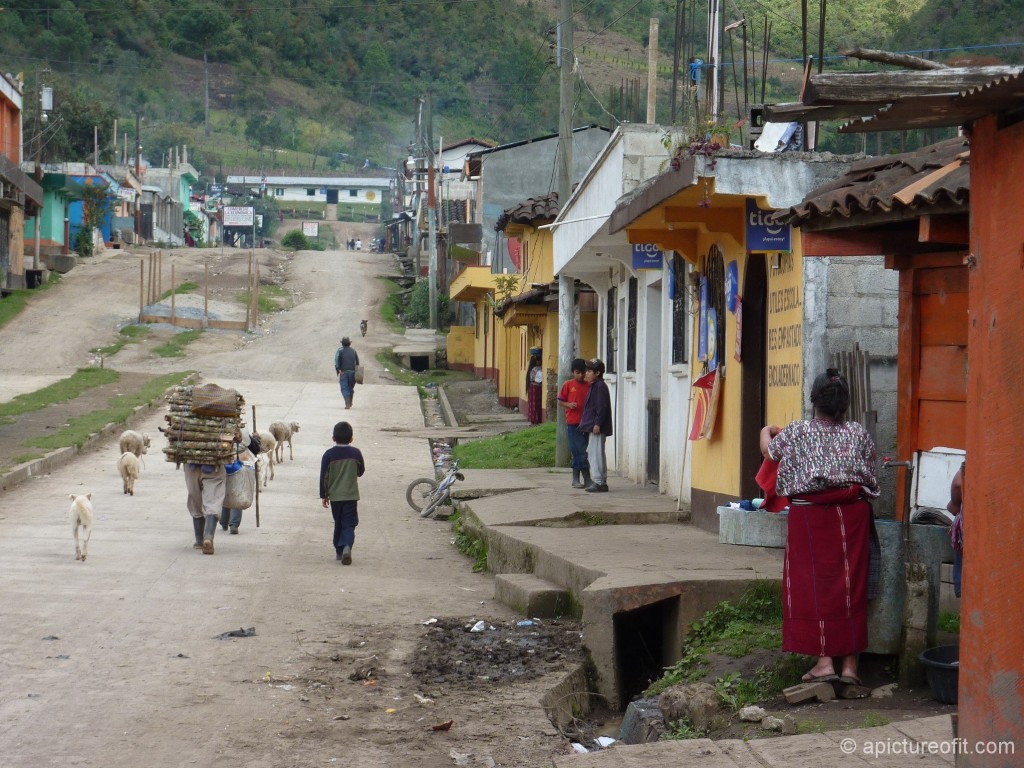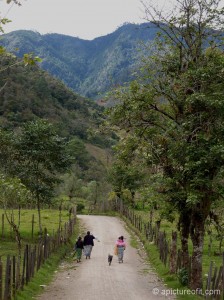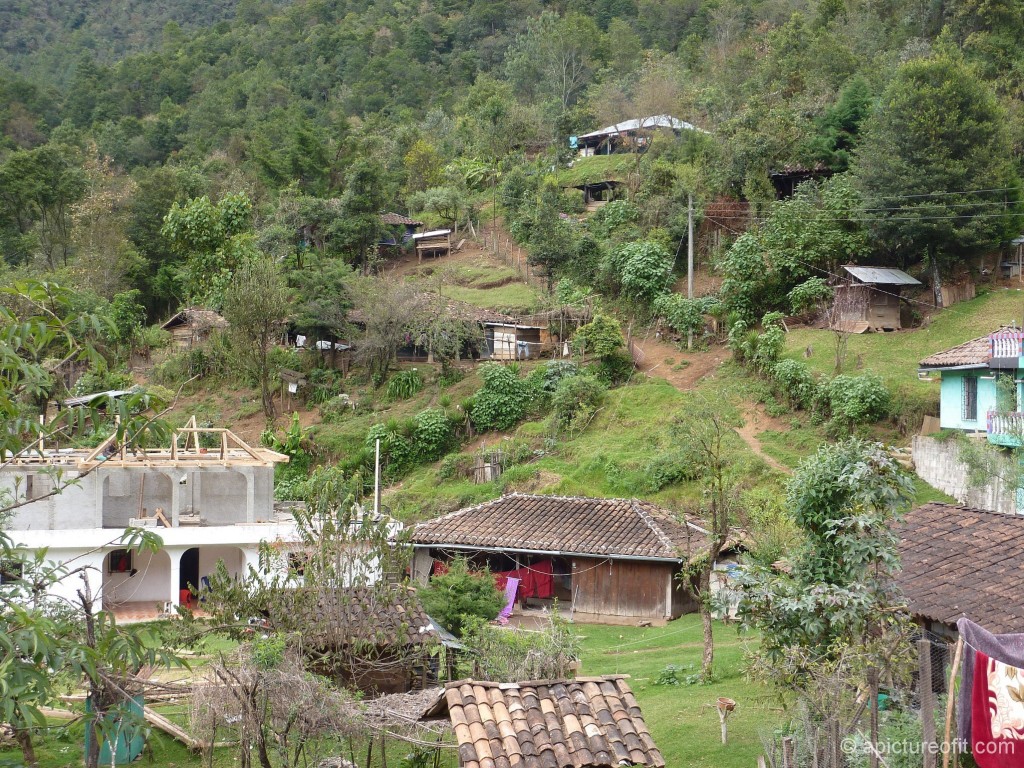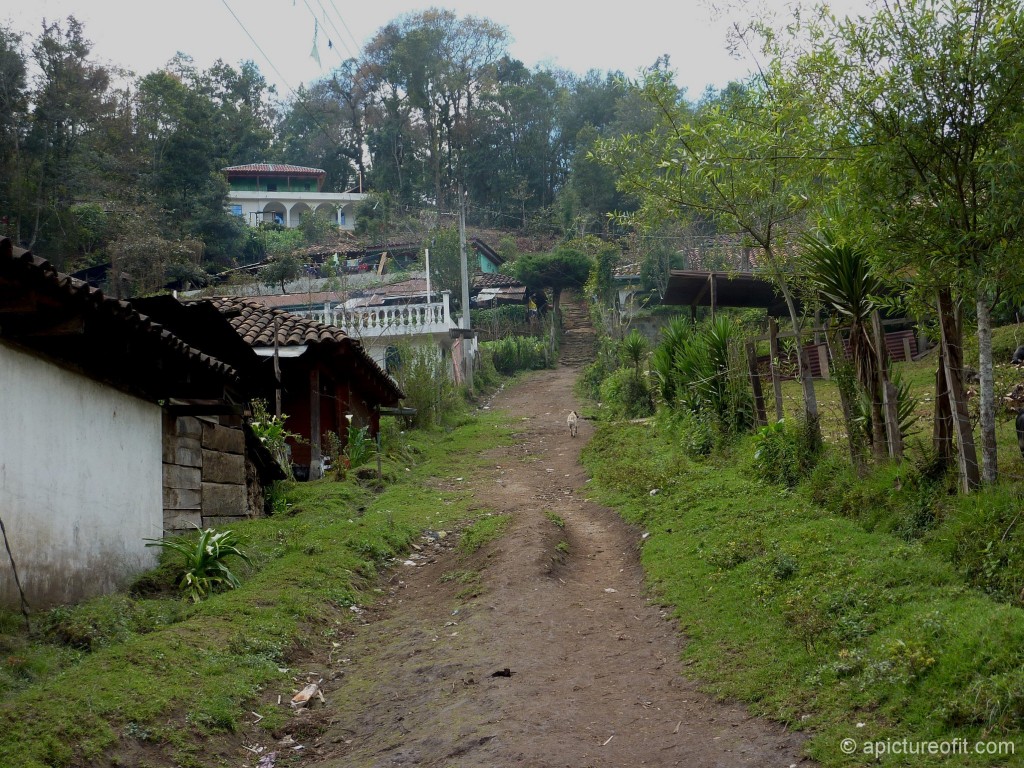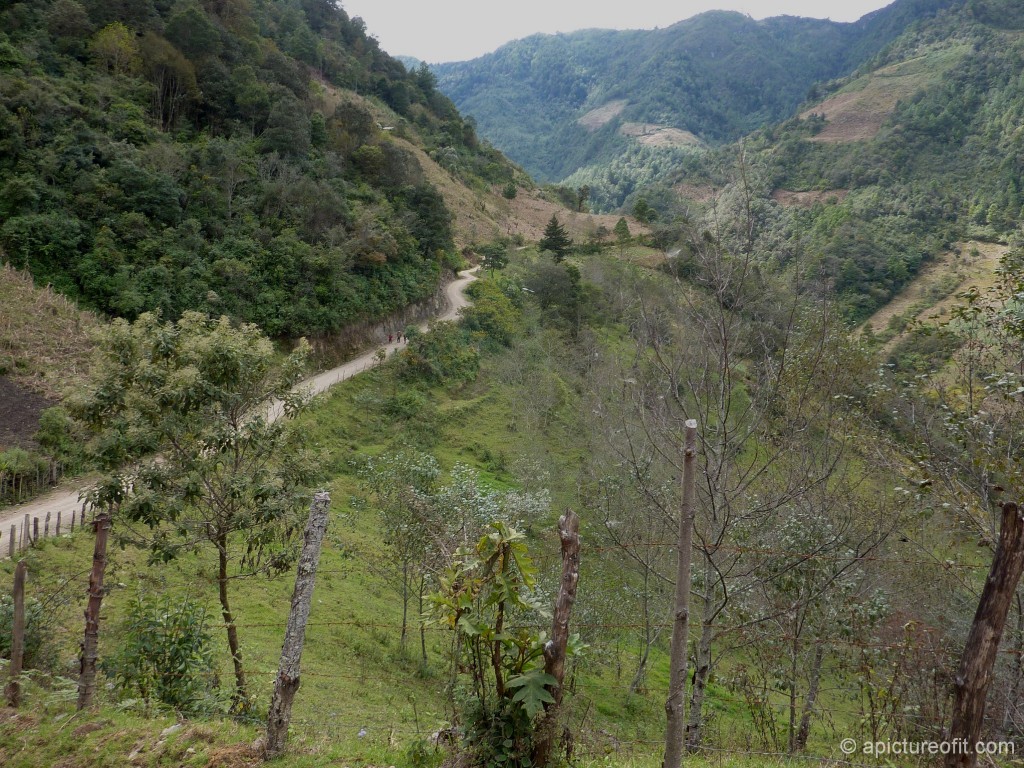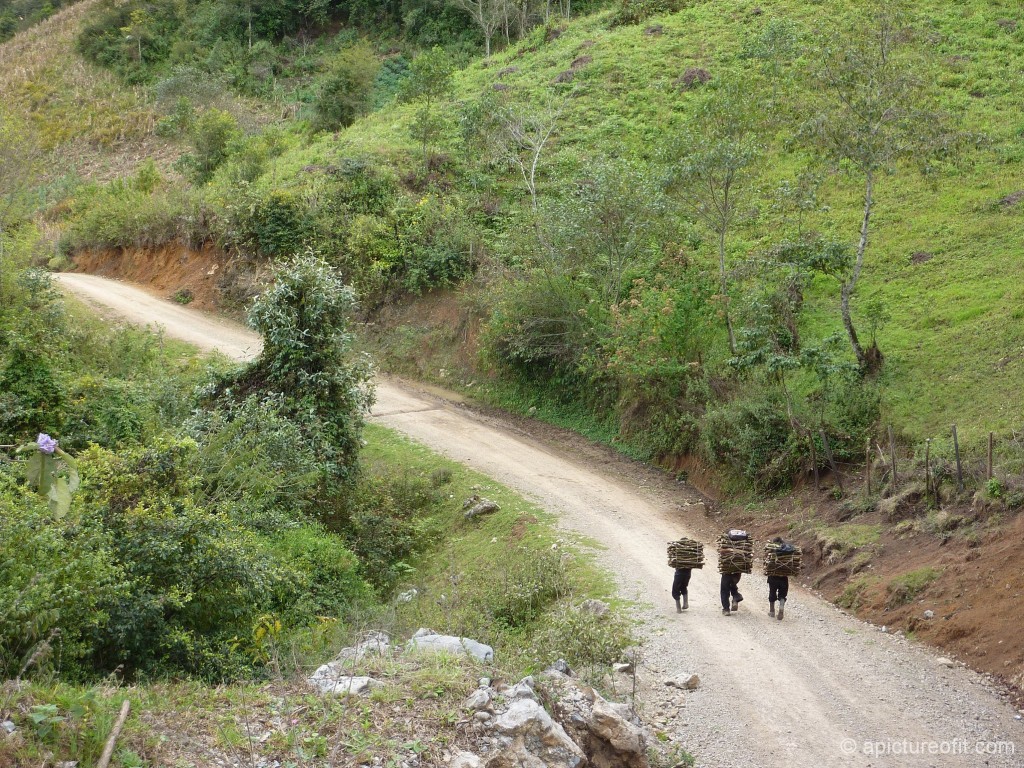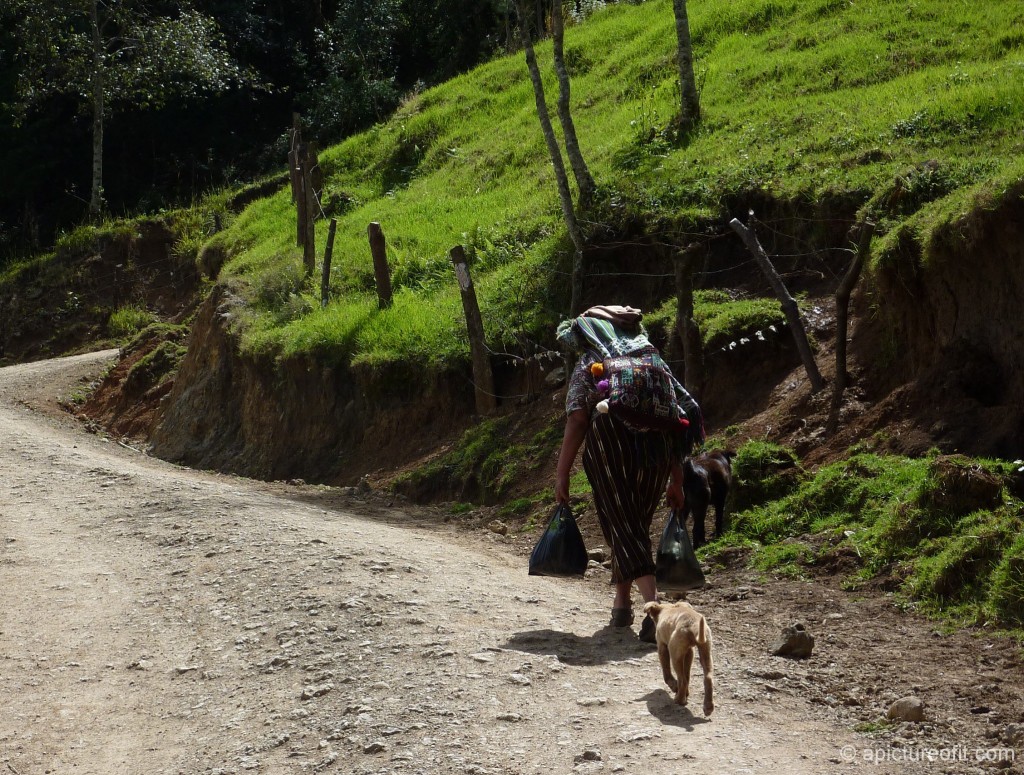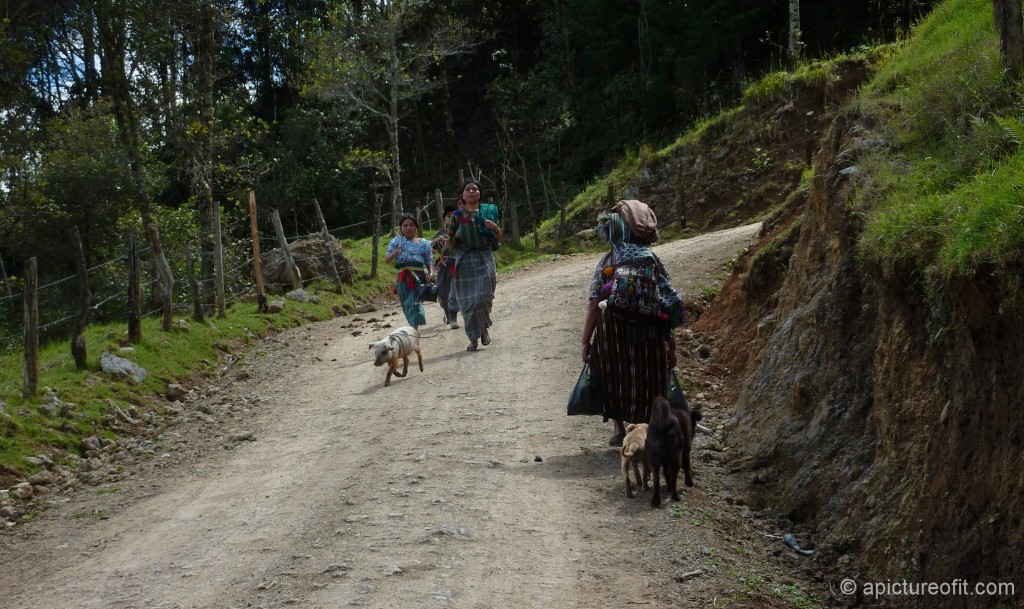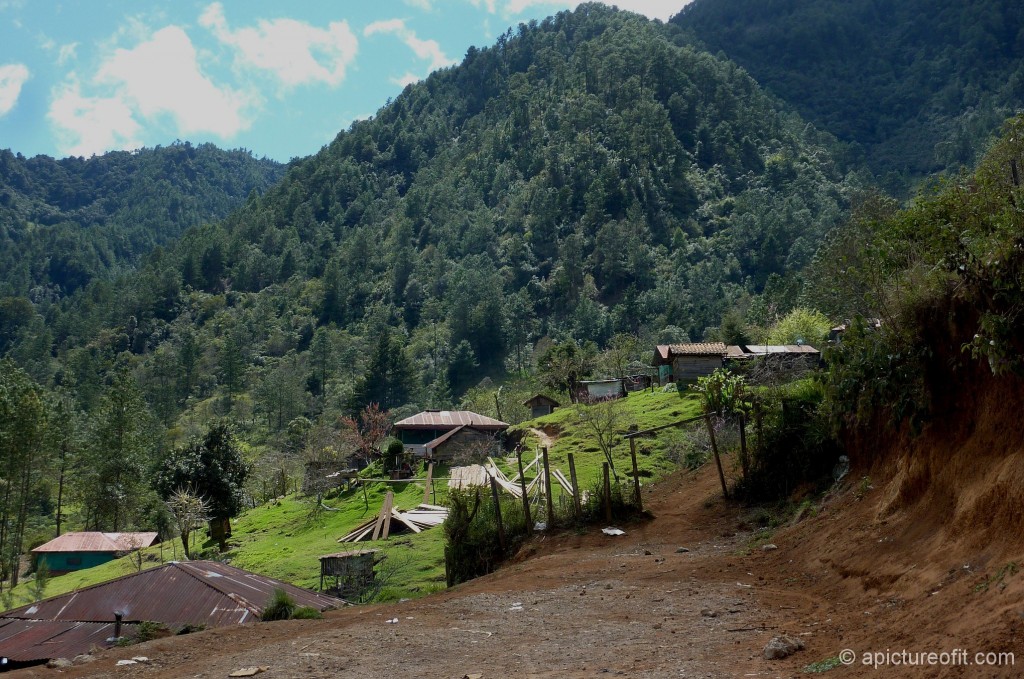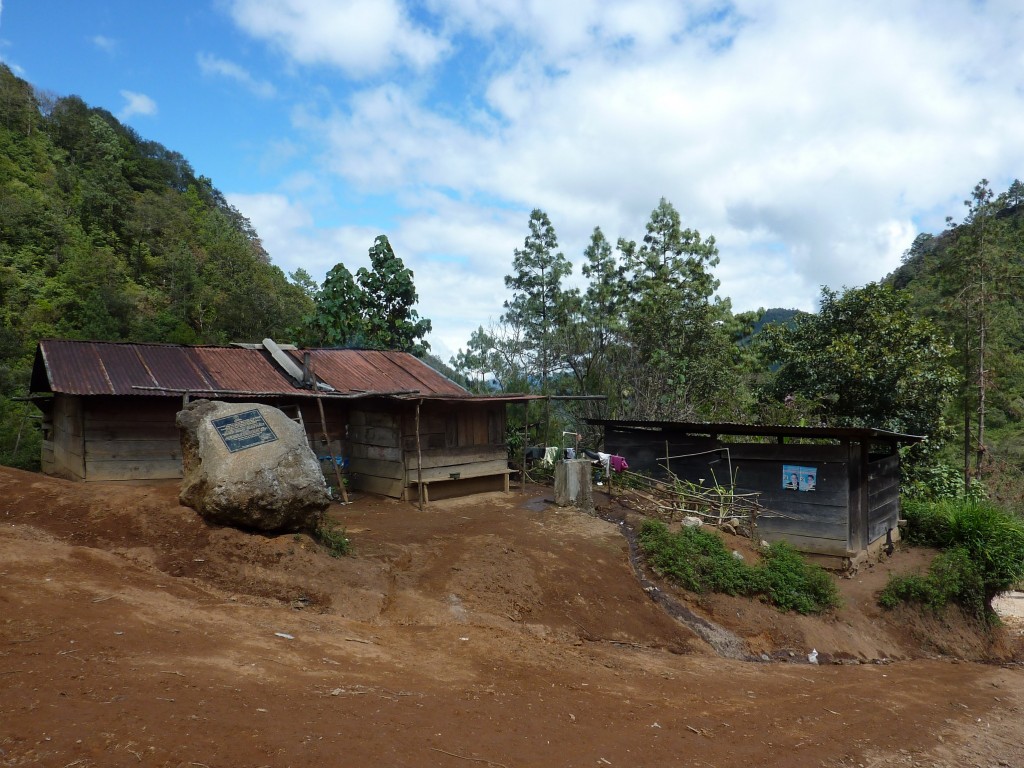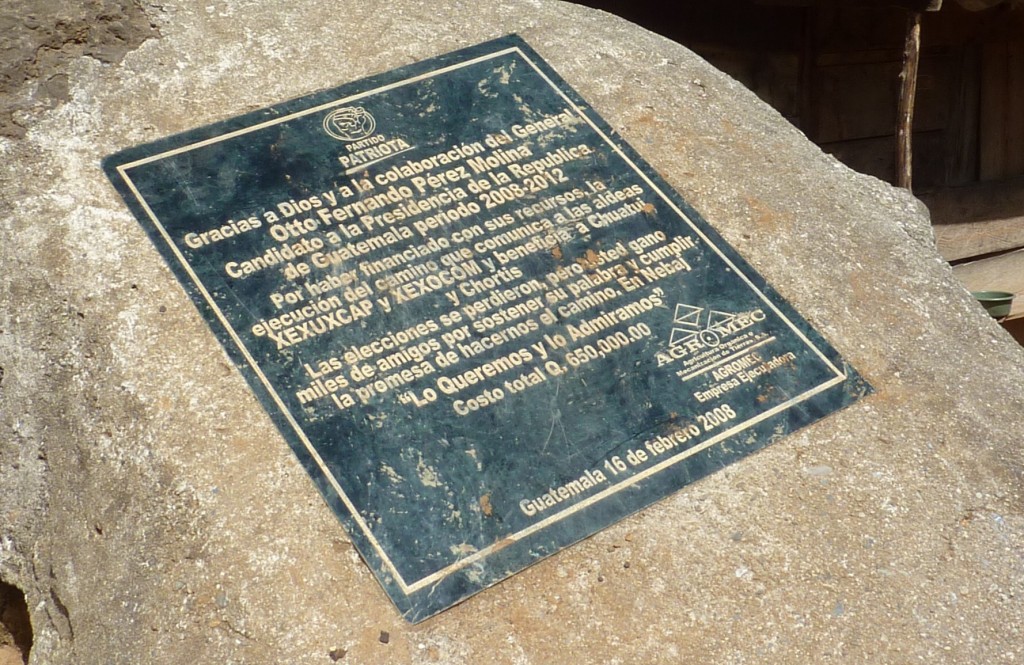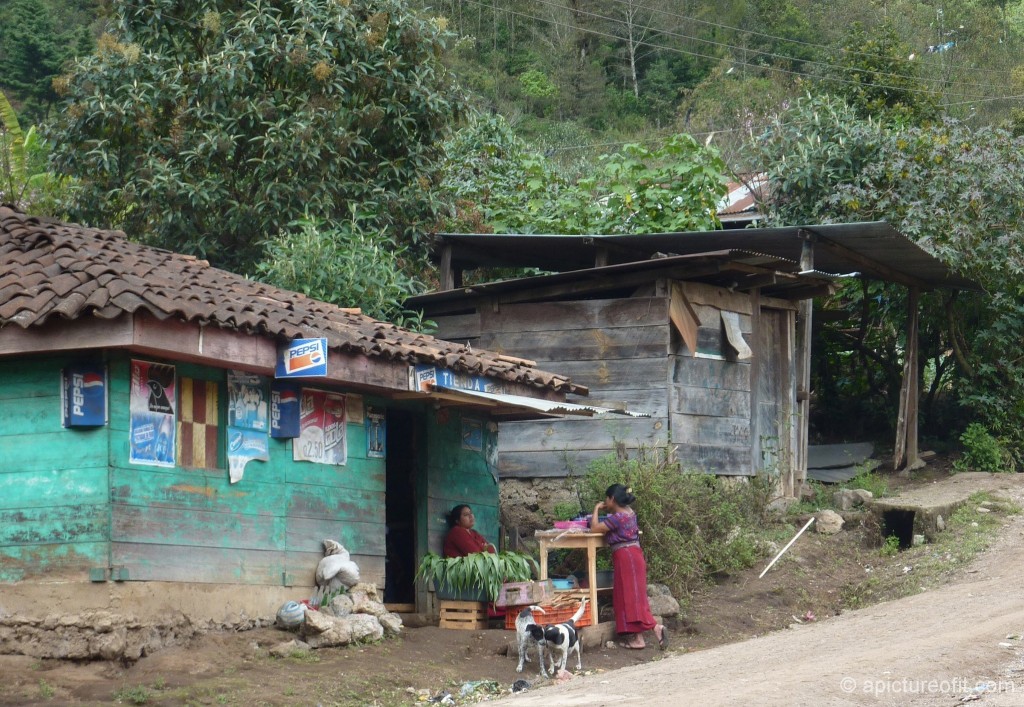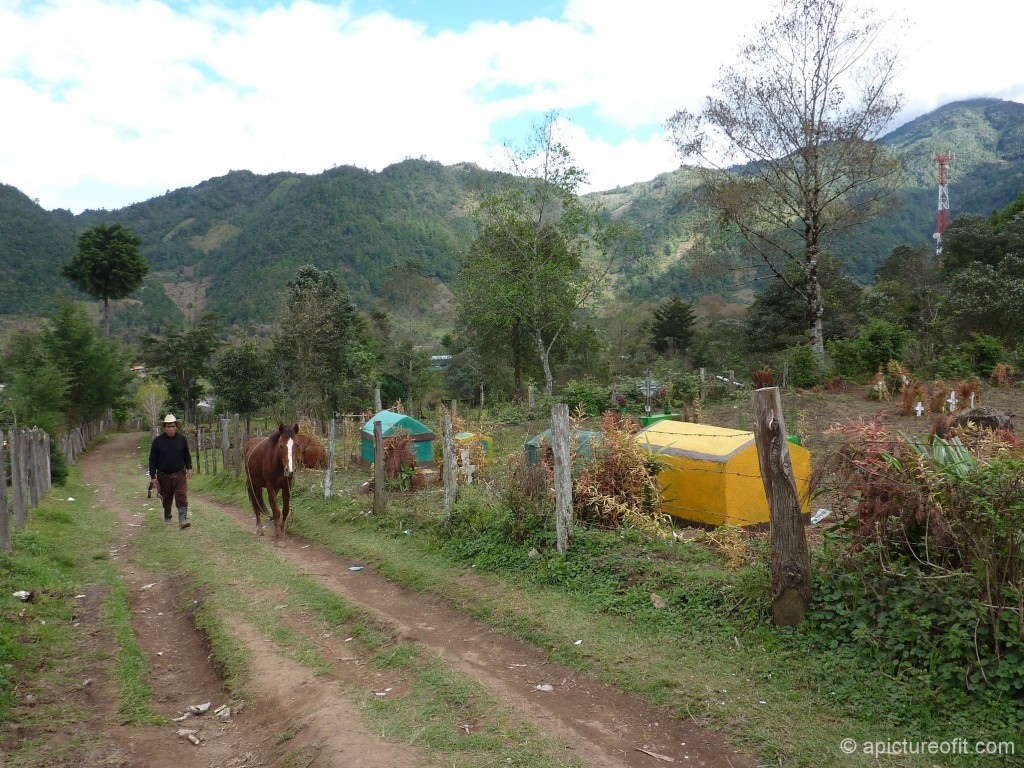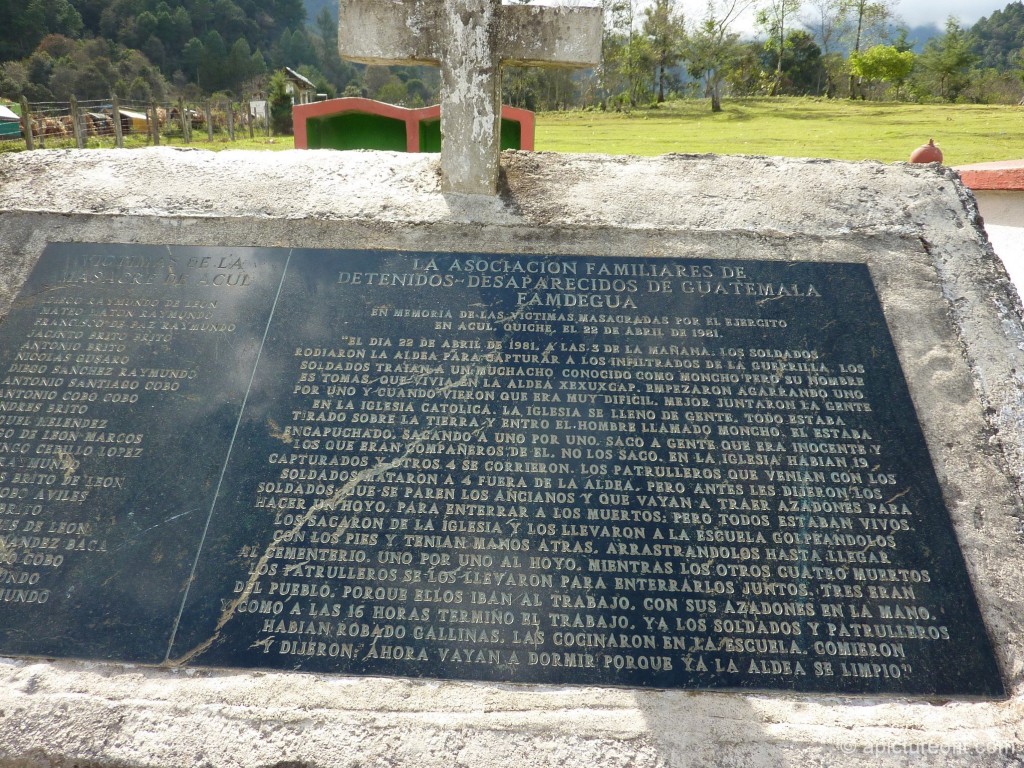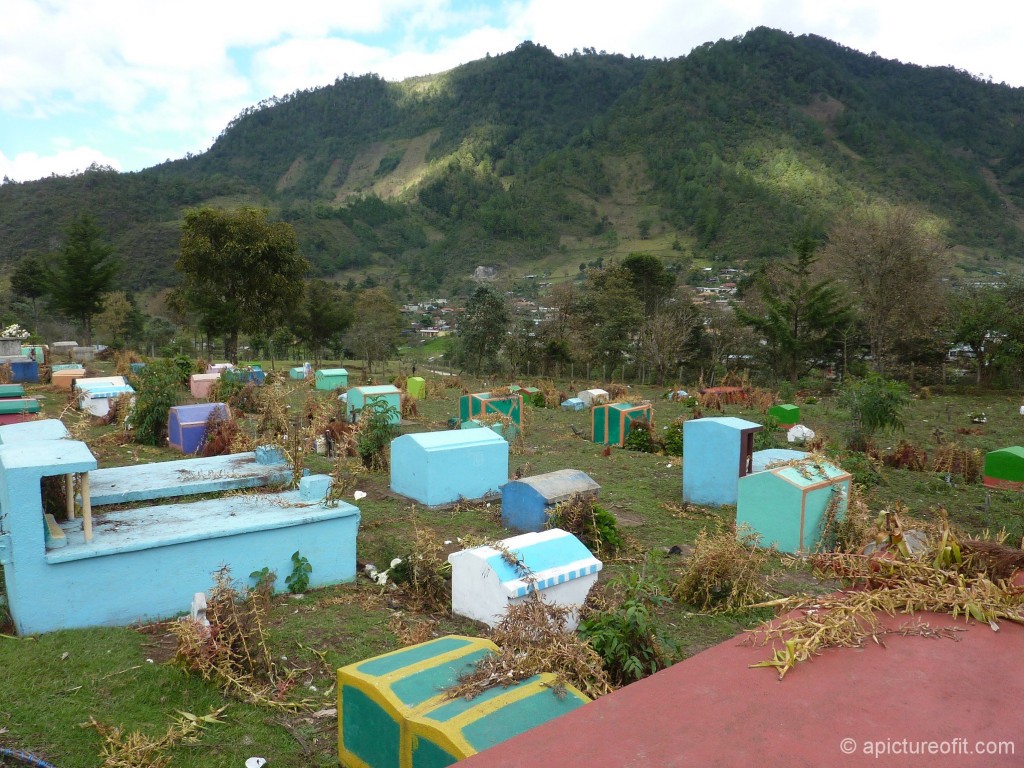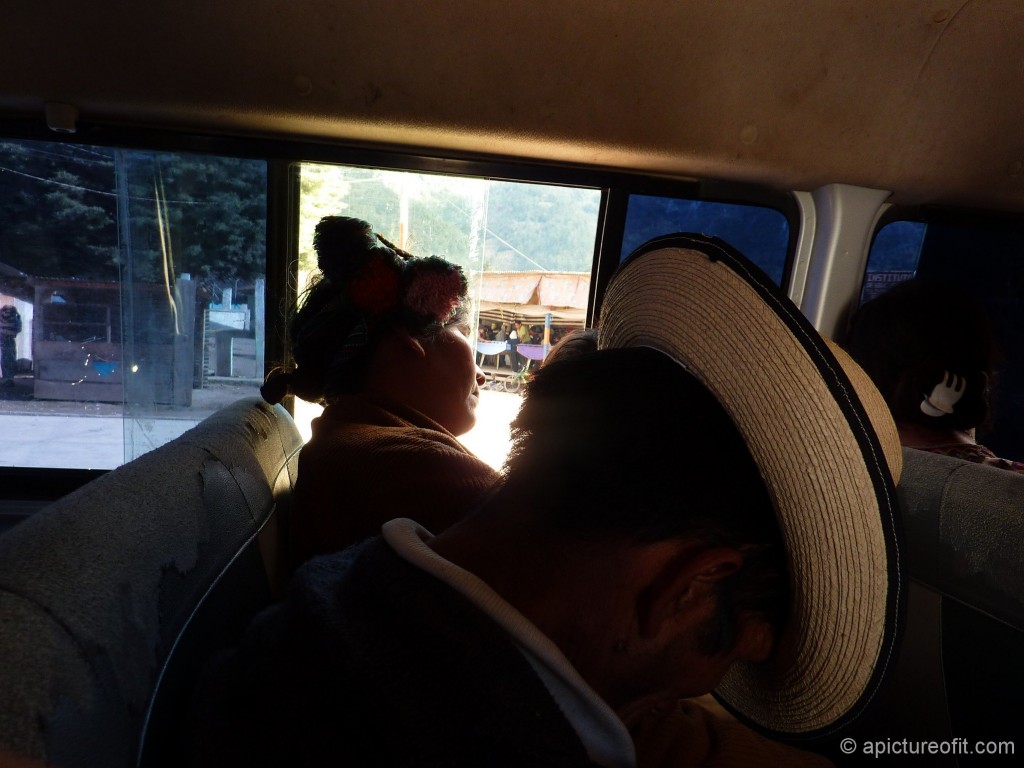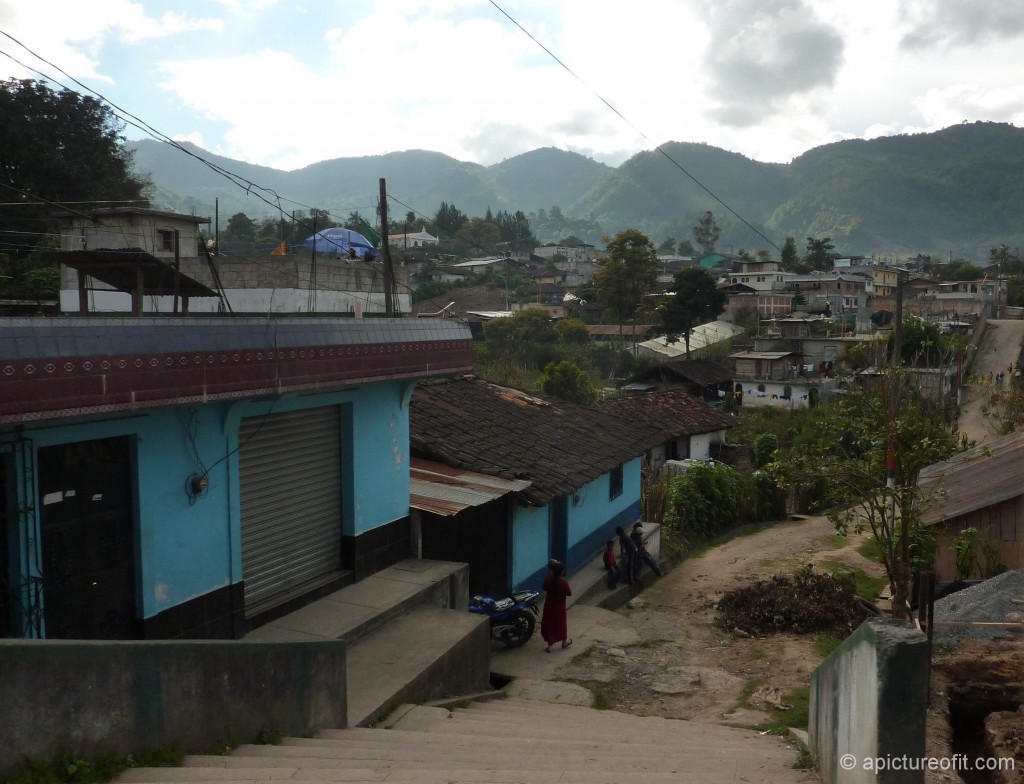The morning in Nebaj, Guatemala, started with light rain. A friend had organized a couple of young boys to guide me on my planned walk, but truly I just wanted this day to be a solitary one – one when I could wander quietly and freely, when I could reflect on the horrors this region had endured in the early 1980s. Having a couple of young boys along was not really part of my plan, and the rain was a perfect reason to decide not to hike after all. But soon after relaying that message to my erstwhile ‘guides’, the rain abated.
I was now on my way to enjoying a quiet afternoon, a largely silent and thought-filled exploration of a small bit of the Sierra de los Cuchumatanes, walking through an area thick with scars from the Guatemalan Civil War.
At noon on this Saturday, I boarded a microbus headed for Acul. Though the village lies only 4 km from Nebaj, the drivable route is much longer, following the river drainages. Acul was one of many hundreds of aldeas in this region destroyed during Guatemala’s civil war. The army then built a camp on the site of the razed village. Survivors of the Acul Massacre, and other refugees from the surrounding mountains, were also housed here, and guarded in a barbed wire encircled compound. It was these refugees who actually constructed the new cookie-cutter Acul. For this was a “model” village which little resembled what had once stood here, little resembled what was familiar and homelike to the villagers.
From Acul, I caught a shared ride to the next village, Xexuxcap.
The tuktuk had dropped all the riders at the near edge of Xexuxcap. I headed on from there by foot, through the village, then about 45 minutes up the long hill, bordered by agricultural fields and forests, to the next tiny settlement, Xexocom.
I shared the steep road with men walking between the fields, with women going down to town and returning with their parcels, with boys gathering firewood from the hills.
Xexocom is a tiny settlement along a stream flowing off the steep mountainsides. It is possible for a walker to stay the night here. Homestay accommodations can be arranged in many of the tiny villages up in the Sierra de los Cuchumatanes.
From this boulder in Xexocom onward, the road steepens and grows more rough. On the rock is a plaque thanking God and General Otto Pérez Molina for the improvements to the road from Xexuxcap.
Those familiar with the Civil War history of this region will understand the impact of this ever present reminder of a perpetrator of incalculable destruction and violence to this region and its people.
It would have been wonderful to have continued on, to have organized to stay overnight, even to have trekked on through for two days more and emerged on the Huehuetenango side of the mountains. But time did not allow, so it was back down the hill, to explore further in Acul.
Once back in Acul, I found my way to the Cemetery, a most atmospheric site with its memorial plaque telling the story of the Acul massacre. The cemetery was tucked into some farmland, not visible from the road.
This plaque tells the story of a young local man accused by the army of being a guerrilla. The army demands that the townspeople execute him for his supposed crimes. In fact he is entirely innocent of the charges. They try to defend him, try to protect him, but in the end all those attempting to stand up for him are killed as well.
Transport back to town leaves once per hour. Most of the passengers sleep away the wait and the drive.
Back in the Nebaj.
The town feels so astonishingly large after a day exploring surrounding villages.


